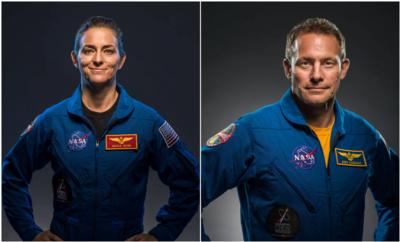A Number Of Astronauts Have Completed Their Training Yet Spent Years Waiting For A Slot To Launch
Astronauts Nicole Mann and Josh Cassada have been reassigned to the agency’s SpaceX Crew-5 mission to the ISS. Part of the Commercial Crew Program, Crew-5 is expected to launch by fall 2022 on a Falcon 9 rocket from Launch Complex 39A in the Kennedy Space Center in Florida. They will join the crew members already in space for a long duration stay as they conduct activities aboard the station.

Mann and Cassada were previously assigned to missions on NASA’s Boeing Crew Flight Test and Starliner-1 mission, but Boeing’s continuing delays in their Starliner program have pushed back that launch until 2022. OTF-1, the initial uncrewed test flight in 2019 had what was described by NASA as a “high visibility close call” when software errors nearly lost the spacecraft. Boeing agreed to pay for a second test flight out of pocket to the tune of $410 million and review its coding and test for errors. OTF-2 got to the launch pad only to scrub hours before takeoff due to a fuel valve issue. Initial estimates delayed the mission by a day, but Boeing postponed it indefinitely in order to reassess and troubleshoot systems in their facilities. In September NASA’s chief of human spaceflight ops, Kathy Lueders, suggested the mission will likely slide to 2022. “My gut is that it would probably be more likely to be the next year” Other NASA astronauts will provide
experience for the mission while the assigned crew heads to space for valuable experience. Recent rumors had intimated that NASA sees a growing need for real-world experience in its astronaut corps, as a number of pilots have completed their training yet spent years waiting for a slot to launch.
Mann, a colonel in the Marine Corps, earned her BS in mechanical engineering from the United States Naval Academy and a Master’s in the same, with a speciality in fluid dynamics, from Stanford. She has more than 2,500 flight hours logged in more than 25 aircraft throughout her work as an F/A-18 test pilot. Her upcoming flight commanding the mission will be her first to space, having graduated from the astronaut program in 2013.

“It has been the opportunity of a lifetime to train on a brand-new spacecraft, the Boeing Starliner, and it has been fantastic to work with the Boeing team,” Mann said. “I am thrilled to have the opportunity to train on another new spacecraft – the SpaceX Crew Dragon – and appreciate the teams at NASA who have made that possible. I am ready to fly and serve on the International Space Station.”
Cassada, also a U.S. Navy test pilot, completed his Ph.D. research at Fermi National Accelerator Laboratory before becoming a naval aviator. In his flight career, he has accumulated over 4,000 hours between 45 different aircraft. Like the commander, this flight will be his first.
“It has been great to spend the last few years training with the joint Boeing and NASA team, and I am really looking forward to now having a chance to also train with SpaceX on a new spacecraft. Cross training on both programs is a unique opportunity to learn, but also to provide valuable insight to future astronauts flying these spacecraft,” Cassada said. “And, of course, Nicole and I are incredibly excited to get to work aboard the International Space Station, executing current operations and also contributing to future exploration beyond low-earth orbit.”
 ANN's Daily Aero-Term (05.17.24): Very High Frequency
ANN's Daily Aero-Term (05.17.24): Very High Frequency ANN's Daily Aero-Linx (05.17.24)
ANN's Daily Aero-Linx (05.17.24) ANN FAQ: Submit a News Story!
ANN FAQ: Submit a News Story! Classic Aero-TV: ANN Visits Wings Over The Rockies Exploration Of Flight
Classic Aero-TV: ANN Visits Wings Over The Rockies Exploration Of Flight Airborne Affordable Flyers 05.16.24: PRA Runway, Wag-Aero Sold, Young Eagles
Airborne Affordable Flyers 05.16.24: PRA Runway, Wag-Aero Sold, Young Eagles




